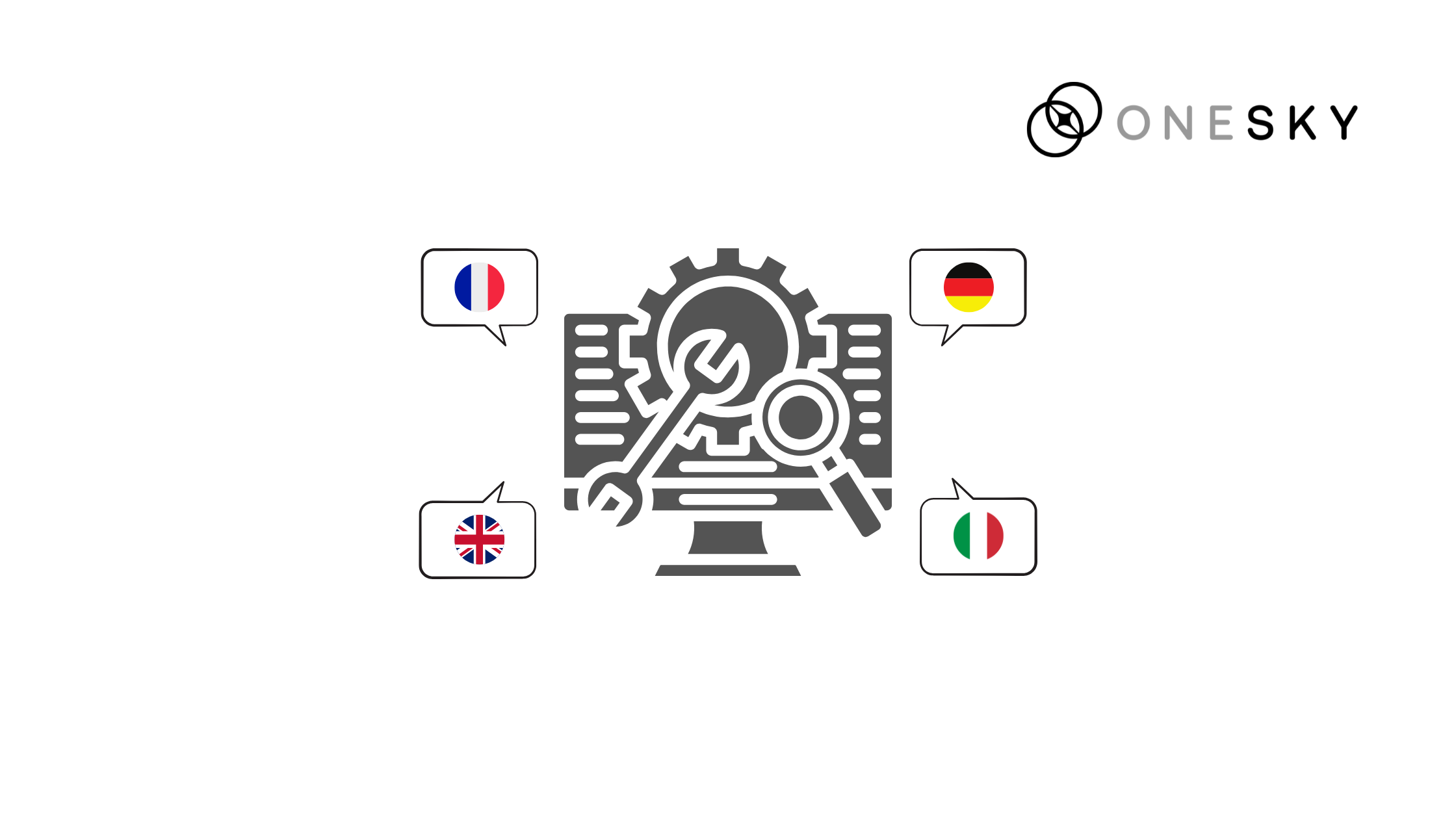Localization Project Management: Its Importance and How Businesses Benefit
What is localization management?
Business owners have started recognizing the need for localizing their products. Many are taking initiatives to localize their websites, software products, video games, and other digital products to tap the potential non-English speaking target markets.
There is no doubt that localization is the best strategy for international expansion because it helps you adapt a product to the linguistic nuances, cultural preferences, and sensitivities of local customers.
But the question is, how do you manage your localization project?
Managing a localization project can be challenging when you want to translate your product into multiple languages and localize it to meet the needs of people in different countries.
This is where the concept of localization project management comes in!
Localization management is all about organizing, monitoring, and optimizing the process of adapting a product to different target markets. It brings all the stakeholders and processes together to automate localization workflows and complete the localization project on time. In fact, effective localization management is the main difference between failed and successful localization projects.
The main activities of localization project management are:
- To bring in advanced technology, API integrations, and automation tools to create efficient translation workflows.
- Facilitate collaboration among writers, translators, developers, reviewers, subject matter experts, and proofreaders.
- Build a centralized repository for critical terminology for the project; this enables stakeholders to quickly search, download and share terminology files within the team.
- Streamline periodic reviews to ensure the project is in line with the specifications.
This article explores the importance and benefits of localization project management to businesses.
Why Localization Management is Important for Businesses
A localization management strategy will help you gain international visibility, improve your credibility, stand out from the competition, and reduce your localization project turnaround times.
Let’s take a deeper look into the benefits of localization management below:
Reduce Turnaround Times
Businesses cannot afford to waste a lot of time localizing their products. They should quickly launch the localized product in the target market and tweak it based on its performance in the real environment.
A localization management tool with features such as translation memories and workflow automation will help reduce the time to market for your localization project.
- Translation Memory: A translation memory is a database that stores the previously translated text. Localization memories, unlike machine translation, will only make suggestions to translate the content. The translator can either accept, modify, or override these suggestions. This increases the efficiency of the translation process and enables translators to complete their job quickly.

- Workflow Automation: Workflow automation is a process of automating a series of business tasks based on pre-set rules. It eliminates human involvement and increases the speed at which the tasks are completed. For instance, OneSky’s translation management platform automates the translation workflows by facilitating integrations with the most popular platforms such as iOS, Android, Google Play Store, App Store, and so on.

Tailor Your Offerings to the Needs of Your Audience
The needs, preferences, and expectations of customers in no two target markets are the same. Unless you modify your messages and tailor your offerings to the needs of your target audience, you will not be able to see success in the international market.
A translation management system (TMS) will help manage your translations on a single dashboard. It allows you to directly communicate with translators, ask questions to them, and provide more context for your translations. This ongoing collaboration with the localization team will help you tailor your offerings to the needs of your target audience.
Stand Out from Your Competitors
There are several ways to stand out from competitors in the global marketplace. One such way is localizing products to meet the needs of local people.
An effective localization management strategy answers the following questions before adapting your websites and software applications to different target markets:
- How are your customers perceiving your brand?
- How are your competitors positioning their products?
- What do you need to do to meet the expectations of customers better than your competitors?
These questions enable your localization professionals to come up with branding messages that align with the cultural preferences of your target market and create a unique brand identity for your products.
The localization management will also ensure the terminologies of the enterprise are consistent regardless of which language the product is translated into. It helps create glossaries and terminology repositories so that writers, translators, proofreaders, and other team members use the same terminology throughout the translation project.

Pro tip: Add a little style to your translation glossary with this guide!
Improve Your Credibility
Trust is the cornerstone of brand loyalty. If customers trust your offerings, they slowly develop a connection with your products and become loyal to your brand.
Localization can help you gain trust and credibility from customers. However, this is possible only when you localize your products impeccably. For instance, spelling mistakes, inappropriate color combinations, and missing placeholders in the translated text on your website or marketing brochure will showcase that you are not committed to delivering quality services to customers.
Localization management brings in automated quality assurance (QA) checks for your localization projects. It means the project will be automatically checked for quality at various stages to identify formatting issues, typos, inconsistencies in terminology, missing placeholders, and so on. These QA checks ensure the final output meets the quality standards and the expectations of target markets. This translates into improved credibility for your business in the international markets.

Gain International Visibility
Since just 22.5% of the world’s population (1.5 billion) speaks the English language, you could be missing out on opportunities to serve people who speak languages such as Chinese, Spanish, French, Hindi, Portuguese, Arabic, and others if you offer English-only products.
A localization management strategy will make your product multilingual and help you gain international visibility.
The best practices for localization strategy to gain international visibility are:
- Turn to internationalization before localization: Internationalization is the process of creating a universal product that can easily be adapted to any language and region. Internationalization ensures you don’t redesign your product from scratch every time you want to localize it for a specific target market.
- Design user interfaces with international user experience in mind: You must ensure that the layouts, interfaces, and UX designs of the product are localization friendly. Since different languages take up different amounts of space, your UX designs should leave enough space to accommodate different languages.
- Determine which languages you want to translate: Don’t blindly translate your website into every language. Do sufficient research on your target markets and make decisions based on interpretations of real-time data. This saves a lot of time, effort, and money for your organization.
- Test localization: You should make sure the final product undergoes on-device testing before being launched to the real marketplace. The on-device testing will help you spot inaccuracies in the translated text and rectify mistakes with layouts and UX/UI designs.
Let the Experts at OneSky Handle Your Localization Management
Business owners should aim to choose a robust localization platform that automates the localization workflows and delivers high-quality translations on demand. For instance, a reliable localization tool will provide clear visibility into every aspect of your translation project. It will enable you to track the progress of your project, see task allocations, and get more clarity about the project delivery date. This eliminates the hassle of making frequent calls to the project manager to get an update on the project status.
OneSky is a leading localization service provider in the market. It offers a best-in-class translation management platform that streamlines traditional localization workflows. With over 1000 professional translators, OneSky will be able to translate your websites, web apps, mobile apps, and video games into 50+ languages across 70 countries worldwide.
The main benefits of OneSky’s translation management are:
- It supports 30+ file formats
- It enables you to directly edit source strings on the system if necessary.
- It facilitates direct communication with translators.
- It triggers a warning to translators if they forget to include placeholders.
- It provides translation memories that enhance translation quality and consistency.
- It allows you to attach screenshots to phrases.
Want to learn more about how OneSky’s translation management platform automates your localization processes? Sign up for free today!



 Written by -
Written by - 




 Written by
Written by 


